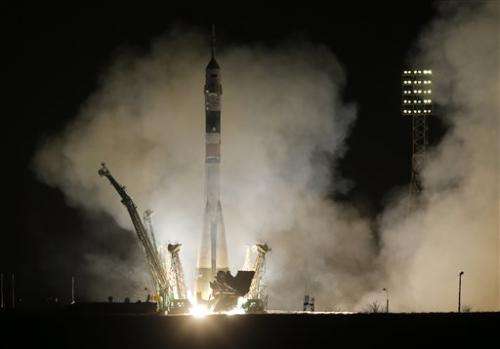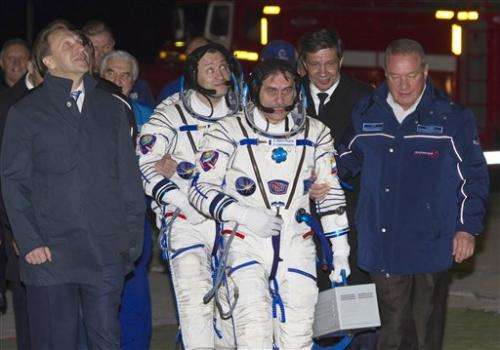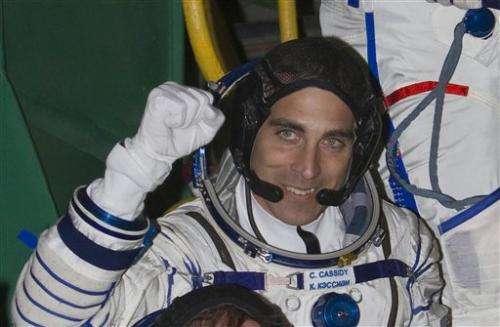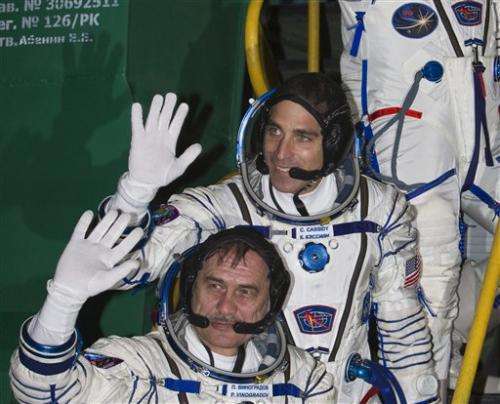US-Russian crew blasts off for space station (Update)

A Russian spacecraft carrying a three-man crew blasted off Friday from a launch pad in the steppes of Kazakhstan, for the first time taking a shorter path to the International Space Station.
Instead of the two-day approach maneuver used by Soyuz spacecraft in the past, this journey to the station would take NASA astronaut Chris Cassidy and Russians Pavel Vinogradov and Alexander Misurkin just under six hours.
The Soyuz TMA-08M lifted off on time from the Russian-leased Baikonur cosmodrome at 2:43 a.m. Friday (2043 GMT; 4:43 p.m. EDT Thursday). It's set to dock at the space outpost at 10:32 p.m. EDT Thursday (0232 GMT Friday).
The trio are "on a fast track to the International Space Station," NASA spokesman Josh Byerly said, adding minutes after the launch that all was going well and the spacecraft went into orbit without any problems.

The new maneuver has been tested successfully by three Russian Progress cargo ships, an unmanned version of the Soyuz used to ferry supplies to the space station.
Vinogradov joked at a pre-launch news conference at Baikonur that the journey to the station would be so quick that it could allow the crew to even carry ice cream as a present to the three men currently manning the orbiting outpost.
"It wouldn't melt in such a short time," he said.

On a more serious note, Vinogradov added that the shorter flight path would reduce the crew's fatigue and allow astronauts to be in top shape for the docking. He said that it takes about five hours for the human body to start feeling the impact of zero gravity, so the quicker flight would allow the crew to more easily adapt to weightlessness in much roomier space station interiors.
The downside of the accelerated rendezvous is that the crew will have to stay in their spacesuits, which they don hours before the launch, through the entire approach maneuver.
Other Russian cosmonauts in the past have described the two-day approach maneuver in the cramped Soyuz as one of the most grueling parts of missions to the orbiting station. The spheroid orbiting capsule allows the crew to take off their bulky spacesuits, change into more comfortable clothes and use a toilet, but its interior is extremely confined.
The ship's spartan layout lacks adequate heating and fails to provide an opportunity for the crew to get hot food. It contrasts sharply with the spacious U.S. space shuttle, whose retirement has left Soyuz as the only means to deliver crews to the space outpost.

Russian space officials said the longer approach was necessary at a time when the station was in a lower orbit required for the shuttle flights. After they ended, it was raised from 350 kilometers (217 miles) to 400 kilometers (249 miles), making a quicker rendezvous possible.
NASA is working on the development of its new generation Orion spacecraft. Orion's first trip is an unmanned mission in 2017, and the first manned mission is set for 2021.
Copyright 2013 The Associated Press. All rights reserved. This material may not be published, broadcast, rewritten or redistributed.


















